Call us FREE 0808 2394 989
Opening Hours - Office open, we'll close at 8:00pm
Call us FREE 0808 2394 989
Opening Hours - Office open, we'll close at 8:00pm

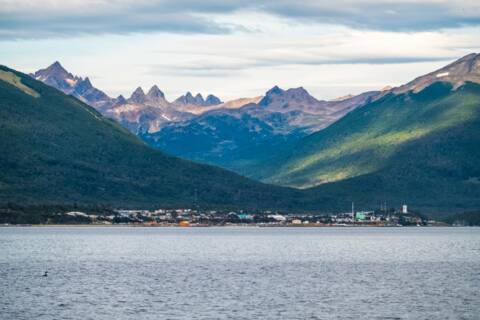
Puerto Williams is a town on Navarino Island in the Beagle Channel in Chile’s far south. Part of the Tierra del Fuego archipelago, it’s known as a starting point for trips around Cape Horn. It’s also a gateway to trails around the jagged peaks of the nearby Dientes de Navarino. In town, the Martin Gusinde Anthropological Museum traces the history of the region’s former inhabitants, the indigenous Yaghan people.
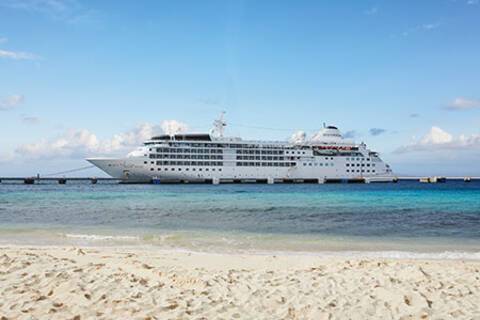

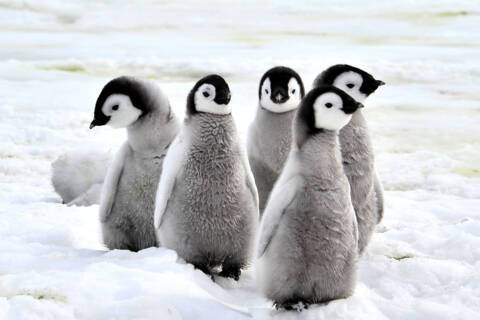
The Antarctic Peninsula unravels upwards towards South America, reaching out a beckoning finger to the adventurous, who dare to explore this untamed realm. Stretching up from the heart of the world’s southernmost continent, the Antarctic Peninsula lies a mere 620 mile from Tierra del Fuego and, for many, offers a spectacular first taste of the snow-blanketed landscapes and colossal ice sculptures, which make up Earth’s least-explored continent. Unseen by humans until 1820 - a blink of an eye ago in relative terms - this is an adventure sure to make your hairs stand on end, as you experience the thrill of the truly unknown and extraordinary. The vast peninsula is sprinkled with research bases, which are at the frontline of human scientific endeavour, pushing to study and understand this unique landscape, its exceptional wildlife, and the impact that humans are having on this pristine continent. Witness cathedral-sized icebergs up close, and blue-hued glaciers, slowly slipping from imposing locations like Hope Bay. Blanched mountain peaks cover the peninsula, and you’ll find thousands of adorable Adelie penguin pairs thriving undisturbed in this peninsula’s unique setting.
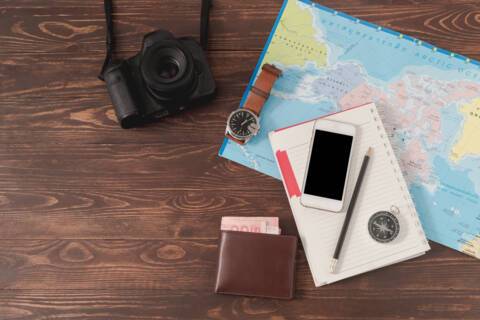

The Antarctic Peninsula unravels upwards towards South America, reaching out a beckoning finger to the adventurous, who dare to explore this untamed realm. Stretching up from the heart of the world’s southernmost continent, the Antarctic Peninsula lies a mere 620 mile from Tierra del Fuego and, for many, offers a spectacular first taste of the snow-blanketed landscapes and colossal ice sculptures, which make up Earth’s least-explored continent. Unseen by humans until 1820 - a blink of an eye ago in relative terms - this is an adventure sure to make your hairs stand on end, as you experience the thrill of the truly unknown and extraordinary. The vast peninsula is sprinkled with research bases, which are at the frontline of human scientific endeavour, pushing to study and understand this unique landscape, its exceptional wildlife, and the impact that humans are having on this pristine continent. Witness cathedral-sized icebergs up close, and blue-hued glaciers, slowly slipping from imposing locations like Hope Bay. Blanched mountain peaks cover the peninsula, and you’ll find thousands of adorable Adelie penguin pairs thriving undisturbed in this peninsula’s unique setting.
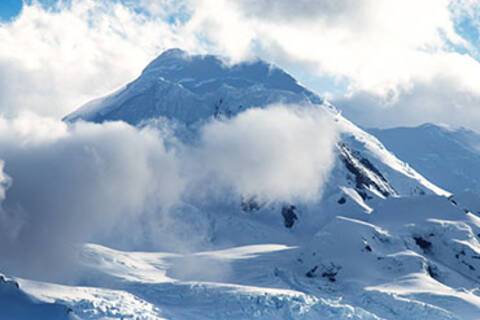
The South Shetland Islands, an archipelago nestled in the frigid waters of the Southern Ocean, serve as a gateway to the pristine wilderness of Antarctica.


Puerto Williams is a town on Navarino Island in the Beagle Channel in Chile’s far south. Part of the Tierra del Fuego archipelago, it’s known as a starting point for trips around Cape Horn. It’s also a gateway to trails around the jagged peaks of the nearby Dientes de Navarino. In town, the Martin Gusinde Anthropological Museum traces the history of the region’s former inhabitants, the indigenous Yaghan people.

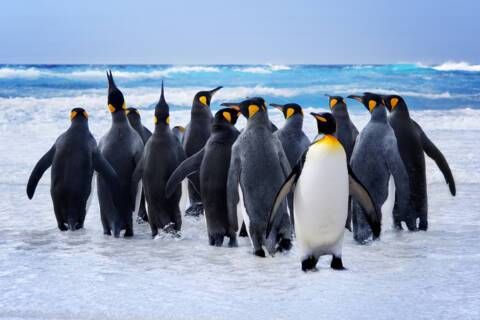
A north-westerly outpost of the scenic Falkland Islands, you'll be welcomed ashore by the calls and cries of a huge colony of black-browed albatross. Indeed, the island was originally known as Albatross Island before being renamed to reflect its geographic location. While the albatrosses - that flash white feathers in the rugged cliffs above the waves - are the most well known residents, they are far from the only animal inhabitants of this remote, isolated land. View less A huge army of birdlife calls the island sanctuary home, overwhelming the tiny human population and sheep that roam West Point Island's grasses. Meet the rockhopper penguins who scamper and burrow along the coast's boulders, as well as the imperial cormorants who rest here in great numbers. You're also liekly to encounter Magellanic penguins during your explorations. Hike the island's quiet landscapes, and look out for endemic plants like Felton's flower carpeting the green interior. Decorated with some of the archipelago's most dramatic scenery, explore this wind-lashed, distant land of soaring cliffs and towering coastal precipices. Cliff Mountain is the island's standout - a towering sandstone monolith, and the archipelago's highest cliff, falling away to swirling waves below. Look out to the waters to spot Commerson's dolphin chasing each other around the island's wave-washed footprint. Whales also visit, as well as the fur seals who you may spot lounging around West Point Island's inviting shores.
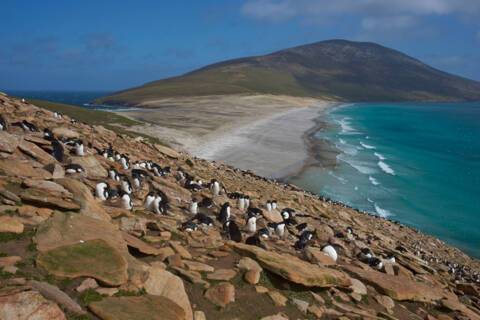
Meet some of the world’s most incredible wildlife, on the remote Saunders Island. Sitting to the north-west of the Falkland’s archipelago, the British established their first settlement here in 1765, at Port Egmont. Remote, wild and wonderful, the island now serves as a lush grazing ground for plenty of sheep - but it's an astonishing place to encounter far rarer animals - from elephant seals to silvery grebes and Peale’s dolphins. View less Connected by sinewy links of beach and sandy dunes, which create some of the most dramatic scenery in the Falklands, the archipelago’s fourth biggest island is home to its best birdlife - including a colony of neatly tuxedoed king penguins. Saunders Island's topography tightens at The Neck - where you'll find even more penguin activity. Colonies squark and chatter in huge crowds here, with Gentoo, Rockhopper and Magellanic penguins dipping into the water, and clambering over boulders. A gentle hike to the summit of Mount Richards will take you 457 metres above sea level, offering an expansive overview, from which you can look out across the tips of the moody waves to see Carcass Island and West Point Island emerging. The cliffs to the north of the mountain host rare black-browed albatross - a sight of sheer grace in flight - but comically clumsy at times when landing. Elsewhere, wide lakes are home to various water birds - including the rare black-necked swans. Take a read of our blog to find out more about the hugely diverse wildlife that is present on this unique island.
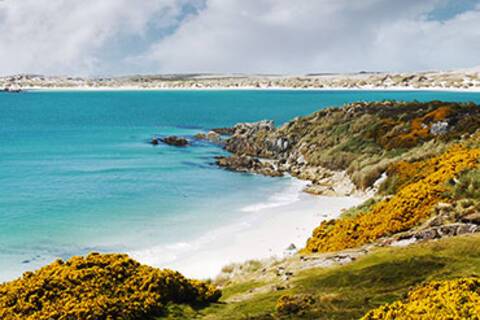
Perched on the windswept shores of the Falkland Islands, Stanley beckons with its remote charm and rugged beauty.

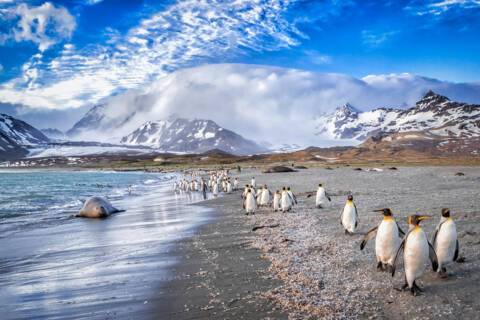
Charcoal-black mountains ladled with snow, giant glaciers and thriving wildlife combine to make South Georgia one of the great natural islands. Adventure to these far flung lands - where the animals are in charge and humans come a distant second. Here you'll witness a cacophony of calling birds, natural set pieces like elephant seals clashing and thrashing, and crowds of colourful king penguins stretching out as far as the eye can see. View less An overseas territory of the UK, these isolated, subantarctic islands once formed a remote whaling centre - and you can still visit the former whaling stations. Nowadays the giants of the sea are free to cruise the icy waters uninhibited. Written into explorer history due to its links with Ernest Shackleton’s tale of Antarctic exploration, shipwreck and survival, the Endurance’s crew were saved when he reached the salvation of these shores in 1916 - before returning to collect the remaining sailors from Elephant Island. A museum commemorates the legendary mission, and you can see the memorial to Shackleton that stands over his final resting place on this fabled island. South Georgia’s colonies of king penguins - with vivid bursts of yellow and orange around their necks - stand, squabble and curiously investigate, enjoying the isolated respite of this island. They’re joined by smaller penguin species like Macaroni penguins, and other glorious birdlife like the majestic wandering albatrosses, which you can see gliding on gusts of wind, over the choppy waves.

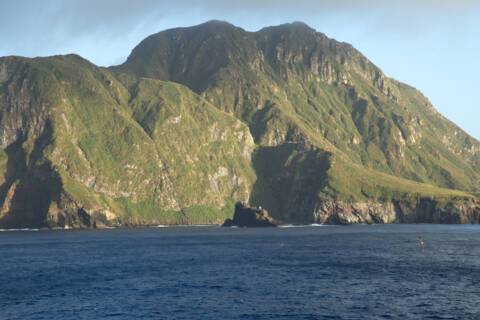
Look for Gough Island on a map, and you'll struggle to locate it, cast far into the expanse of the South Atlantic Ocean. An almost entirely uninhabited volcanic island, barely within the grasp of humans historically, just a small bunch of hardy researchers live here. They share their home - a full 1,700 miles to the west of Cape Town - with a stunning array of seabirds, including endemic species like the Gough moorhen and Gough bunting. View less Part of the UK overseas territory of St Helena, Ascension and Tristan da Cunha - the world's most remote inhabited archipelago - Gough Island forms part of a remarkable UNESCO World Heritage Site and serves as a vital island sanctuary for rare and celebrated birdlife. Blasted by harsh winds and rough seas throughout the year, Gough Island's coastline has been shaped and sculpted into a dramatic, imposing site. An island of extraordinary wildlife, migrating whales cruise through the waters around it, while colonies of albatross and rockhopper penguins wander its shores and cliff faces. If you arrive on these shores following a downpour, you'll be treated to displays of waterfalls cascading through the undergrowth. Gough Island may serve as a sanctuary for seabirds, but a concerted effort has had to be made to deal with mice, which were brought by humans in the 19th century. With few predators, they thrived here, endangering the Tristan albatross in the process. A project has been launched to decrease the mice population and protect the island's delicate ecological balance.

Uninhabited except for the majestic, million-plus seabirds that call this castaway island home, it doesn't get much more raw and remote than Nightingale Island. Adrift between South America and Africa, in the Tristan da Cunha archipelago, the island takes its name from British explorer Gamaliel Nightingale and is the smallest of these distant volcanic lands. Craggy coastline and rugged cliffs rise imposingly from the waters of the South Atlantic, as you approach this remote volcano island - which erupted most recently in 2004. View less Largely free from human interference, Nightingale Island is known for the abundant birdlife that thrives here and is a shelter for some of the world’s rarest species. Designated as an Endemic Bird Area and an Important Bird Area, the island's birds are awarded special protection, and only select visits to these shores are permitted. Amid the cawing and calling of the island’s endless flocks, you can spot the rare canary-like Nightingale bunting, and Wilkins’s bunting - which are found only here. Little gangs of rockhopper penguins patrol the rocks and hop over boulders - easy to distinguish against the blackened landscape, with their distinctive yellow flashes of feathers. You’ll also see the graceful glide of Atlantic yellow-nosed albatrosses, and the plunges of great shearwaters. Keep one eye open for the glint of gold during your expedition ashore - rumours swirl that undiscovered pirate treasure was once stashed somewhere on the island.
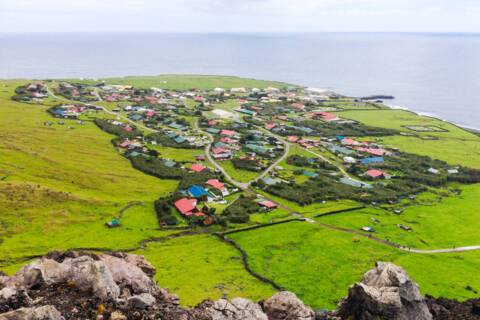
Sailing to these lonely volcanic islands feels a little like dropping off the map, as you aim for the seemingly endless ocean horizon. A true adventure, the journey rewards generously, as you track down the world's most remote archipelago, and discover its incredible, endemic birdlife. A full 1,500 miles away from the nearest neighbour, St. Helena, it's fair to say that the Tristan Da Cunha archipelago is a long way off of the beaten path. Venture to the only inhabited island, where a hardy 250 souls live out their lives. View less Tristan Da Cunha was first discovered at the beginning of the 16th century by Portuguese explorer Tristao da Cuhna - who named the island after himself. He was unable to actually step out onto its land, however, as the waves churned violently below his ship, rendering the shores inaccessible. A volcanic island, the 2,000-metre tall Queen Mary’s Peak dominates it - although the islanders were unaware of its sleeping power until it rumbled into life in 1961. The population were forced to abandon the shores temporarily for their own safety. The extraordinary, rare wildlife is the main reason why most set their compass for these far-flung islands. Tristan Da Cunha is alive with vibrant birdlife, from Atlantic yellow-nosed albatross to Tristan thrush, and many, many more - including the endemic and endangered Tristan wandering albatross. Roughly 90% of the northern rockhopper penguin population also visit to breed on this vital outpost, while sea lions lay around on the shores, and whales and dolphins cruise the waters.

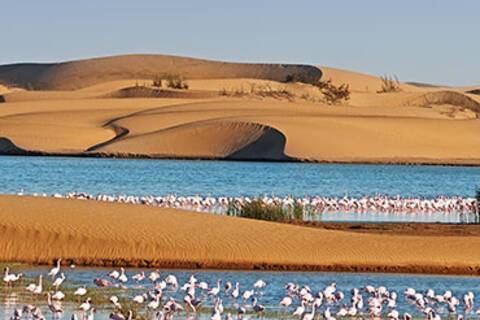
Walvis Bay, Namibia’s unique maritime and adventure oasis, is a sparkling city on the Atlantic, renowned for its natural lagoon and thriving birdlife.
Silversea
View prices as:
Your current viewing preference is:
Per-Person Pricing
* Prices shown are per person, based on two adults sharing a twin cabin and include all cruise offer discounts and savings.

LOADING
| Deck | Price | Enquire | |
| G1 | Deck 7 | Enquire now |
| Deck | Price | Enquire | |
| G2 | Enquire now |
| Deck | Price | Enquire | |
| O1 | Deck 7 | Enquire now |
| Deck | Price | Enquire | |
| O2 | Enquire now |
| Deck | Price | Enquire | |
| R1 | Deck 6 | Enquire now |
| Deck | Price | Enquire | |
| R2 | Enquire now |
| Deck | Price | Enquire | |
| SL | Deck 5 | Enquire now |
| Deck | Price | Enquire | |
| VI | Deck 4 | Enquire now |
| Deck | Price | Enquire | |
| DX | Deck 5 | Enquire now |
| Deck | Price | Enquire | |
| CV | Deck 5 | Enquire now |
As spacious as a grand hotel, as gracious as a best friend's home, the lifestyle on board Silver Wind is one of fewer guests, more space and boasts Silversea’s renowned personalised service.
What’s on board: Boutique, Changing Room, Conference Room, Connoisseur’s Corner, Dolce Vita, Expedition Office, Fitness Centre, Jogging Track, La Dame, La Terrazza, Laundrette, Medical Center, Observation Library, Panorama Lounge, Photo Studio, Pool Bar, Pool Deck, Reception, The Grill, The Restaurant, The Show Lounge, Zagara Beauty Spa and much, much more.
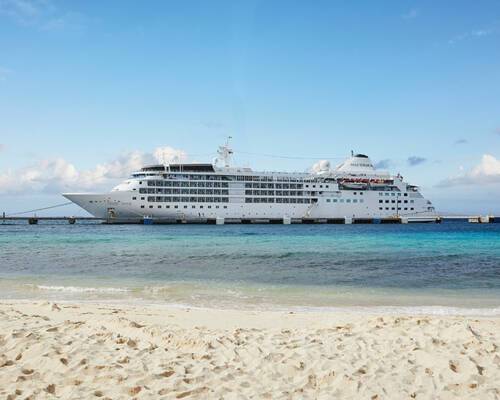
Yes, all Silversea ships are equipped to offer Wi-Fi access.
At Silversea, the comfort, enjoyment and safety of all guests is paramount. Most areas onboard are non-smoking and, as a safety precaution, smoking is not permitted in guest accommodations. However, smoking is permitted in the Connoisseur’s Corner and in specifically designated areas.
Yes, guests can take alcohol on their Silversea cruise. There are no limitations.
Gratuities are included in the price of your Silversea cruise.
The currency used onboard Silversea is US Dollars.
Shipboard attire ranges from casual to formal. Casual wear is appropriate for daytime aboard the ship or ashore and consists of standard sports outfits as worn at 5-star resorts. Evening attire falls into 3 categories; casual, informal and formal.
Shore excursions are available to book in advance via My Silversea until 2 days prior to sailing.
*Please Note: The pricing shown in the search may be incorrect - we apologies for any inconvenience caused - we are looking into this issue and hope to have it rectified as soon as possible.*
Case of Six Fine Wines is one per booking, for Ocean View Staterooms & above on cruises of 7 nights & above, for Mainland UK addresses only.